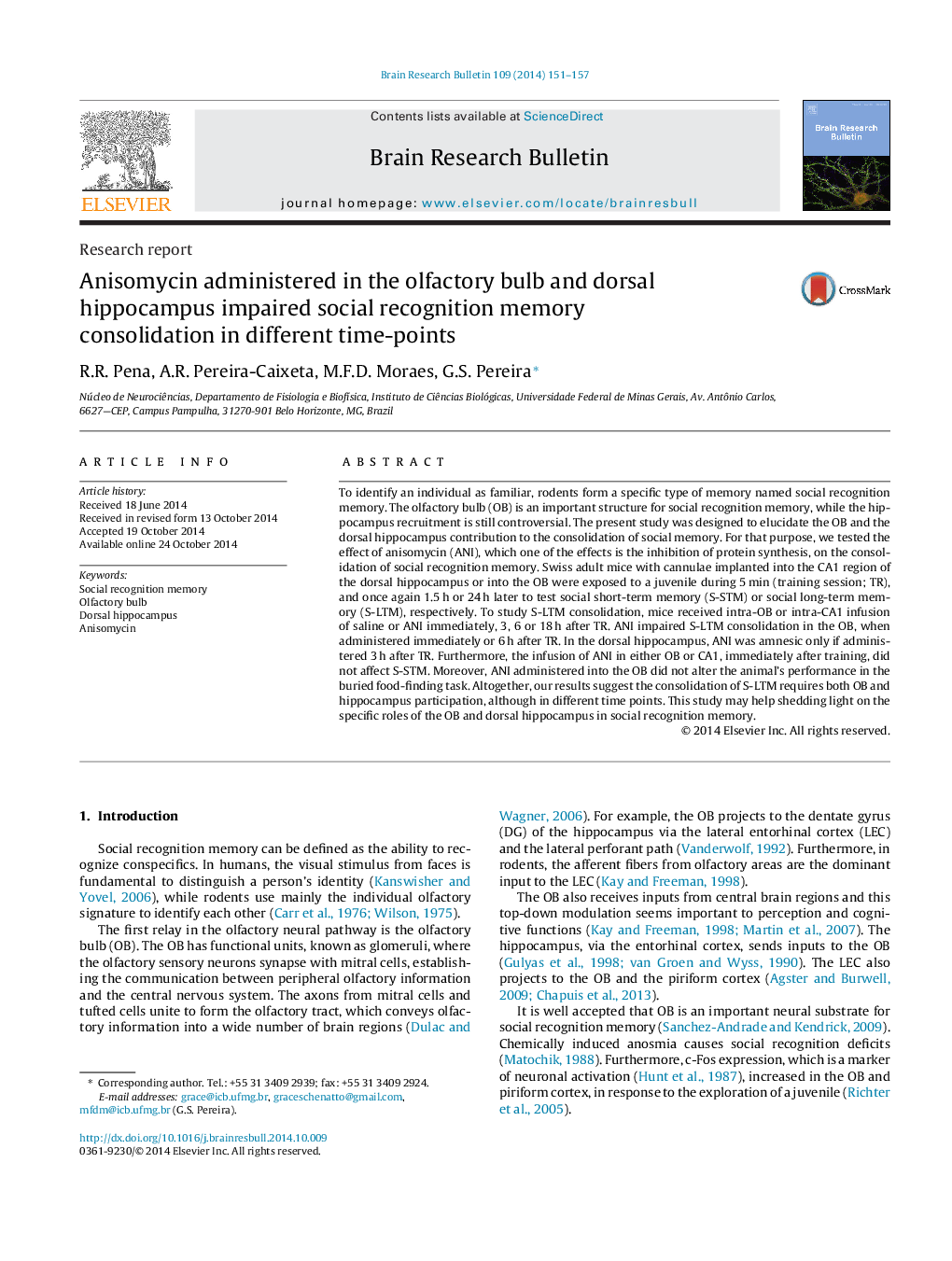| Article ID | Journal | Published Year | Pages | File Type |
|---|---|---|---|---|
| 6261750 | Brain Research Bulletin | 2014 | 7 Pages |
â¢Intra-OB anisomycin impaired social memory immediately or 6 h after training.â¢Intra-CA1 anisomycin impaired social memory 3 h after training.â¢Intra-OB and intra-CA1 anisomycin did not affect social short-term memory.
To identify an individual as familiar, rodents form a specific type of memory named social recognition memory. The olfactory bulb (OB) is an important structure for social recognition memory, while the hippocampus recruitment is still controversial. The present study was designed to elucidate the OB and the dorsal hippocampus contribution to the consolidation of social memory. For that purpose, we tested the effect of anisomycin (ANI), which one of the effects is the inhibition of protein synthesis, on the consolidation of social recognition memory. Swiss adult mice with cannulae implanted into the CA1 region of the dorsal hippocampus or into the OB were exposed to a juvenile during 5Â min (training session; TR), and once again 1.5Â h or 24Â h later to test social short-term memory (S-STM) or social long-term memory (S-LTM), respectively. To study S-LTM consolidation, mice received intra-OB or intra-CA1 infusion of saline or ANI immediately, 3, 6 or 18Â h after TR. ANI impaired S-LTM consolidation in the OB, when administered immediately or 6Â h after TR. In the dorsal hippocampus, ANI was amnesic only if administered 3Â h after TR. Furthermore, the infusion of ANI in either OB or CA1, immediately after training, did not affect S-STM. Moreover, ANI administered into the OB did not alter the animal's performance in the buried food-finding task. Altogether, our results suggest the consolidation of S-LTM requires both OB and hippocampus participation, although in different time points. This study may help shedding light on the specific roles of the OB and dorsal hippocampus in social recognition memory.
